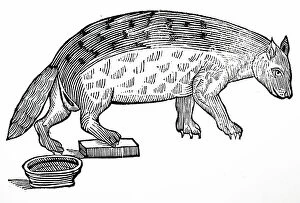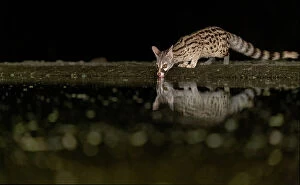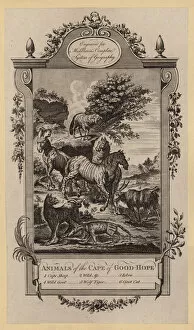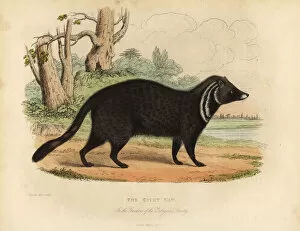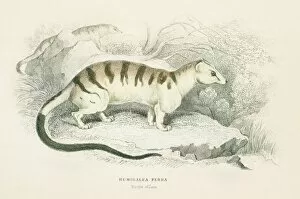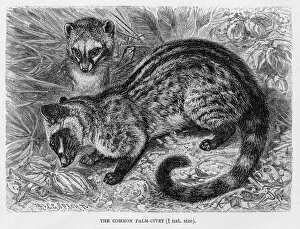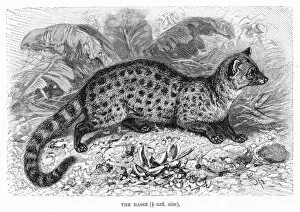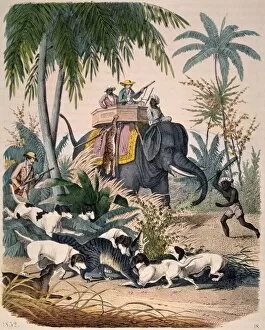Civet Cat Collection
The Civet Cat, also known as the African civet (Civettictis civetta
For sale as Licensed Images
Choose your image, Select your licence and Download the media
The Civet Cat, also known as the African civet (Civettictis civetta), is a fascinating creature that has captured the attention of artists and naturalists throughout history. In an engraving from 1855 titled "Civet cat engraving, " we get a glimpse of this elusive animal's appearance. Found in the Cape of Good Hope, these animals were featured in another engraving called "Animals of the Cape of Good-Hope. " Their unique markings and sleek physique make them stand out among other mammals. In a pencil and watercolor artwork named "Hunting Kuttauss or Civet Cat, " we witness their nocturnal habits. These creatures are skilled hunters who thrive under the cover of darkness. Trade signs depicting barbers and chemists often included images of civet cats, highlighting their importance in traditional medicine. This lithograph titled "Trade signs: Barbers and Chemists" showcases how deeply intertwined they were with human culture. A color lithograph from around 1860 called "Mammals" features various species, including the palm civet Hemigalus, Viverra genet, Galidictis Chrysogastes, Eira weasel, and otter civet. Each one demonstrates the diversity within this family of animals. An engraving from 1855 specifically focuses on Palm Civets (Hemigalus) while another highlights Genets (Viverra genet). Both engravings provide detailed illustrations that allow us to appreciate their beauty up close. One cannot help but marvel at these incredible creatures' adaptability to different environments. From forests to grasslands, they have managed to survive against all odds for centuries. Although not related to actual cats or weasels, these carnivores possess certain feline characteristics combined with long bodies reminiscent of mustelids like otters. This can be seen in an enchanting engraving from 1894 titled "Otter civet engraving.


